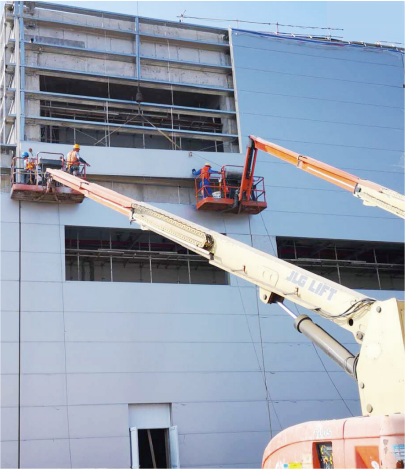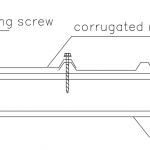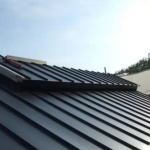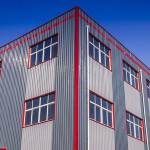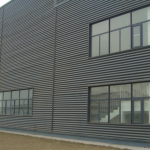Mobile: 8613421351153
Cold room with sandwich panel design points
Due to the growing demand, more and more cold room for food and medicine, and a large number of cold room is used in cold room sandwich panel. So, what are the design points and detail structure of cold room sandwich panel?
Core material requirements
The adhesive used for bonding should be stronger, more durable and more heat-sensitive than the core of the sandwich panel.
The core material should have a low thermal conductivity, good integrity, a high rate of closure of the foam holes, and be of a quality that ensures that it does not contain substances that contaminate the food itself.
The core materials of cold room sandwich panels generally use polyisocyanurate (PIR) and polyurethane (PUR) materials. The density should be greater than 35kg/m3, and the thermal conductivity should be less than 0.024W/(m.K).
However, when rock wool is selected as the core material, water-repellent rock wool should be used. Density should not be less than 120kg/m3 Thermal conductivity should be less than 0.044W/(m.K).
The combustion level of the core material of the sandwich panel should not be lower than B1 level, and the use of B3 level materials is strictly prohibited.
Cold room structural system
The frame system of the wall and roof of the cold room should form a stable structural system. The frame members should be galvanized (e.g. C-type and Z-type keel), and the amount of galvanization on both sides of the members should be not less than 275g/m2. In order to ensure the structural system integrity of the cold storage, to avoid the sandwich panel system due to on-site opening holes, accidental impact deformation caused by the reduction of thermal insulation performance.
Other designs for cold room sandwich panels
Other designs of cold room sandwich panels:
Loads and effects shall include constant load, variable load, temperature difference between internal and external plates, wind load and occasional load, and seismic effects shall be considered when there are heavy equipment loads on the cold room module; What is more important for cold storage sandwich panels is to perform thermal insulation and energy saving calculations and design anti-cold bridge structural measures. These should meet the energy saving requirements of cold storage buildings.
The sealing material of the cold room sandwich panel should be neutral and anti-mildew silicone glue, and should have low temperature resistance, weather resistance and elasticity. The thermal expansion coefficient of the sealing strip should be greater than the thermal expansion coefficient of steel.
Cold room sandwich panels are a new requirement. They need to ensure the effectiveness of the food or medicine inside. There are many designs to consider. In addition to structural and architectural design, their thermal insulation properties also need to be considered.
